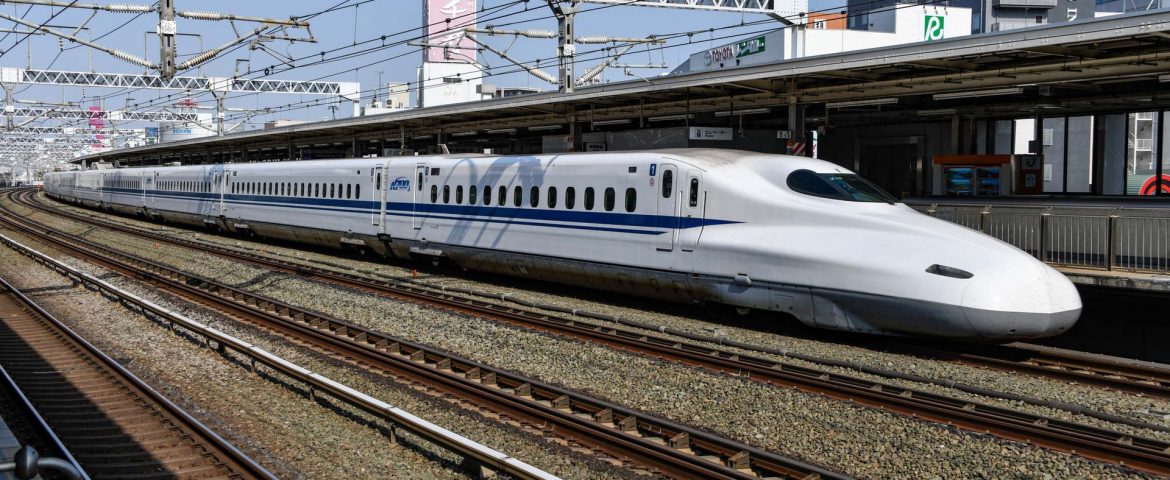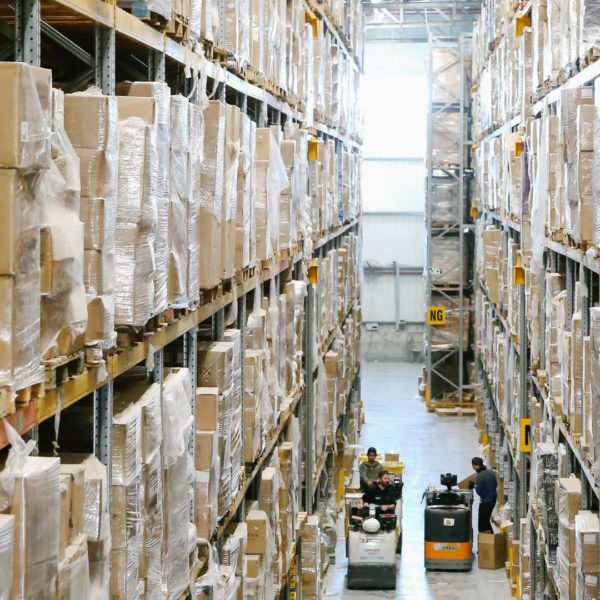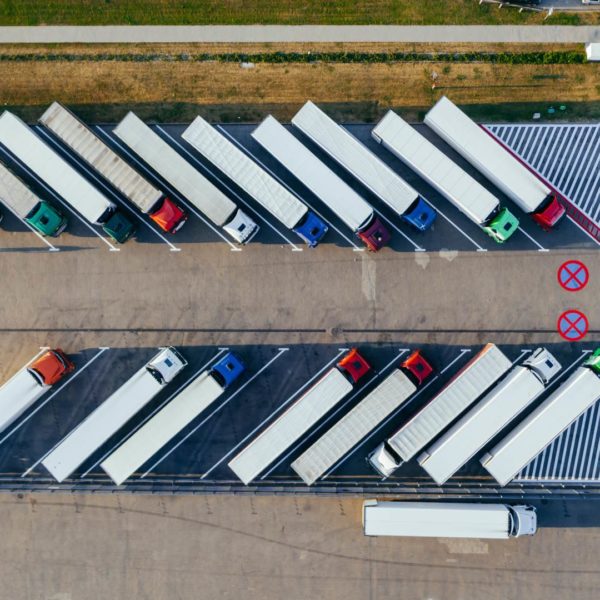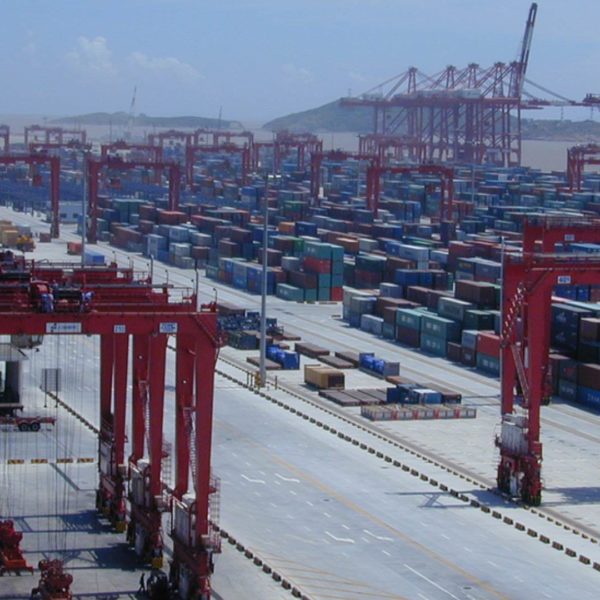How fast do trains go?
A lot of media attention is on high speed rail, but what does that really mean?
Generally high speed railway is considered to be any trains operating regularly over 120mph but can vary drastically on the country and railway line.
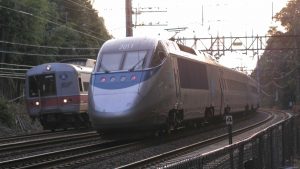
The Northeast Corridor (NEC) is the highest speed portion of Amtrak with trains being capable or operating at 150 mph throughout several sections. Much of the NEC operates significantly under this speed due to track conditions not permitting the higher speeds.
Outside of the NEC, Amtrak operates typically between 50-70 mph, and in a few places higher where track conditions and signaling systems permit it. Keep in mind that Amtrak does not own its track outside the NEC and operates on the track of freight railroads which have no need for high speed operations with most freight trains moving at 40-70mph.
Recent developments and proposals for highspeed lines in the US include a highspeed train line in California between SF and LA, a route in Texas between Dallas/Ft. Worth and Houston, Brightline’s Miami- Orlando/Tampa and a planned highspeed route between LA and Vegas. The ideal length of travel for highspeed rail is anywhere from 100- 500 miles, or the sweet spot between being too long to drive but too short to fly. On Amtrak’s NEC, many prefer Amtrak to flying as trains don’t require arriving at the station an hour before departure; they are much more roomy and comfortable and offer better amenities. Flying between DC and NYC could actually take longer once you consider arriving at the airport early and time it takes to deplane.
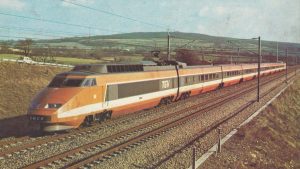
Europe and Asia
Passenger trains are numerous in Europe with different operators providing a vast range of routes and service times.
The world record for fastest traditional trains on with steel wheels riding on steel rails was a French TGV test train which high 357.2 mph while normal operation is around 200 mph.
Notable high speed lines in Europe include include Germany’s ICE, the French-Belgian Thalys, Eurostar, Spain’s AVE, and Italy’s Frecciarossa, all operate around 300km/ 186mph or so in normal service with test runs hitting higher speeds.
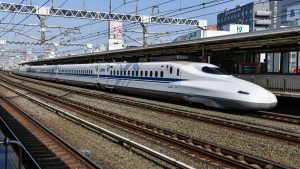
The famed Japanese bullet trains were one of the pioneers of high speed rail service starting with the Tokaido Shinkansen in 1967, and continuing to evolve through the decades. Interestingly enough, Tadanao Miki, who designed the nose streamlining on the original bullet trains also designed planes for the Japanese Navy during WW2 including the Ginga bomber and the Ohka rocket kamikaze plane. He regretted his contribution to the war and sought to use his skills for peaceful purposes following the war which led him to working on the Shinkansen project.
The safety record of Japan’s Shinkansen is exemplary, having hauled over 10 billion passengers since it inception without a single passenger fatality.
The fastest train in normal operation is a Maglev train in China, reaching service speeds of 270mph. Maglev trains operate using a system of electro magnets that cause the train to float slightly above the the track, drastically reducing friction. With a test run of a Japanese maglev train in 2015 still holds the absolute world record for the fastest train, hitting a speed of 374mph. China plans for regular operation of next –gen maglev trains at around 370mph.
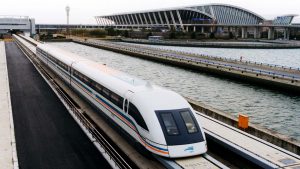
Historic Milestones
A look back through history shows a few other highlights of rail speed records. During the mid- late 1800s, railroads were cutting edge with many people never having seen something mechanical and the population relying heavily on horses for transportation. Overland transportation that could carry hundreds or thousands of tons worth of cargo and travel at 40-60mph changed the world and allowed the US to become much more connected. Many were uncomfortable with machines and some even thought that the human body simply wasn’t designed to go above 50 or 100 mph and would fall apart when it crossed that speed barrier.
1848 – 60 mph Boston and Main railroad –first authenticated train or machine of any kind to travel 1 mile per minute
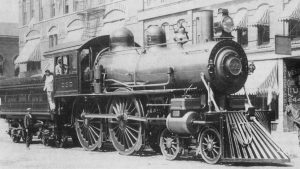
1893 – 100 mph ( claimed) NYC’s 999- while not validated, 999 was claimed to be the first locomotive or object to hit a 100 mph. Some sources are skeptical.
1927 – Lindbergh run – Following Charles Lindbergh’s flight across the Atlantic, new papers in NYC were competing heavily to be the first to show footage of the event. And a race ensued between a plan and train to see which could bring newsreel footage from Washington DC- NYC the fastest. While the train was slightly slower, the film was processed onboard the train, allowing the footage carried on the train to arrive an hour before the one carried by plane. The average speed across the entire trip was around 74 mph with 115mph as an unvalidated top speed.
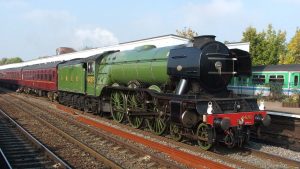
1934 – 100 mph officially! London and Northeastern Railway Flying Scotsman was the first train to be officially recorded operating over 100 mph. It’s very likely that trains hit 100 mph prior to 1934 as steam locomotive technology was quite advanced by the 1920s with many fast passenger locomotives having being built in the 1890s and certainly by the very early 1900s, it was just not “official”, as per the 999 above.
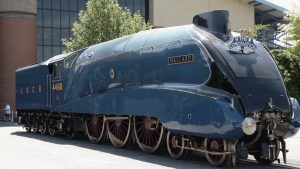
1938- 126 mph -London and Northeastern railway Mallard. Fastest steam locomotive officially recorded. While there have been claims of other steam locomotives such as PRR’s T1, MLW Hiawathas, or ATSF 4-6-4 and 4-8-4s going faster, it was never officially documented.
1987 – 148 mph- Fastest validated speed for a diesel locomotive.
Passenger trains in the United States
The United States has long been dominated by the automobile as the primary methods for passenger transport, along with airlines for long journeys, with Amtrak and trains in general playing a lessor role outside of commuter operations in large cities and Amtrak’s Northeast corridor between Washington DC and Boston. However before the interstate system was created and airlines rose in popularity, trains were the method of moving people and goods across the country. Even today in the US freight trains are the most efficient means of moving long haul freight and handle about 20% of overall US freight volume. Amtrak hauled over 32 million passengers in 2019 with 12.5 million riders on its Northeast Corridor, representing record growth.
Pre Interstate days saw nearly all freight railways running an assortment of passenger trains across the US between every city imaginable. Overtime passenger trains became highly unprofitable for freight railways and were an immense financial weight on the stuggling systems. It’s to understand today, but trains represented the transition from horse and buggy to mechanized transport. Before trains, journeys took days and weeks, not hours.
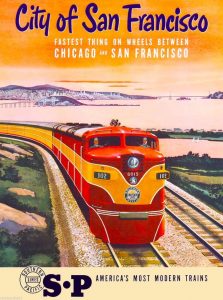
Railways during the 1920s-1950s were very competitive with passenger trains, and marketed them heavily to leisure, business and tourist passengers, with many railroads owning hotels at popular destination and major terminals. Interestingly enough, many passenger trains during this time actually travelled faster than non-NEC Amtrak trains do today, due to less rigorous track standards, being able to market more competitive services again rival railroads.
What about freight trains?
Freight trains travel much slower than the highspeed passenger trains of the world, but in total weigh many thousands of tons more.
In the US average
Data from the Union Pacific shows an average speed of 27.5mph, but this includes stopping to wait on other trains and other purposes, meaning the average speed of a journey being 27.5, but in reality the train was likely traveling more like 40-60mph. This is like calculating the average time of your beach trip drive including rest stops, food stops and gas station visits.
While trucks carry a majority of freight volumes, trains carry around 40% of ton miles of freight. Particularly for bulk commodities and long haul freight, trains represent a cost savings and efficiency advantage over trucks. Intermodal freight, which is a similar service to over the road trucks involves using trucks to carry containers from the origin to a rail yard, then the train for the long haul portion then another truck for the final delivery, is becoming more and more popular due to its inherent efficiency, cost savings and environmental advantages. A significant amount of cross border freight from Mexico and Canada arrive in the US via intermodal and carload service trains. USPS, FedEx, and UPS also utilize intermodal services for longer routes sometimes using their own trailers or containers and sometimes working with other container owners.
Recommended for further reading:
https://en.wikipedia.org/wiki/Railway_speed_record
https://phys.org/news/2017-04-steam-100mph-uk-year.html
https://www.statista.com/statistics/547745/average-train-speed-union-pacific-railroad/
https://en.wikipedia.org/wiki/High-speed_rail
https://fortune.com/2015/06/04/americas-bet-on-bullet-trains/
https://en.wikipedia.org/wiki/Shinkansen
https://www.bbc.com/news/world-asia-32391020
http://shinkansen.the-japan-news.com/popup_chp01_p02_1.html
About Zmodal:
Zmodal is a multimodal supply chain provider specializing in cross country shipping, door to door intermodal solutions, drayage and supply chain optimization all through our easy to use digital dashboard.
